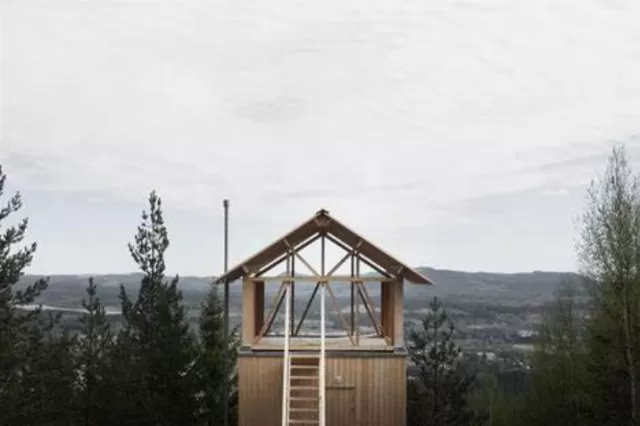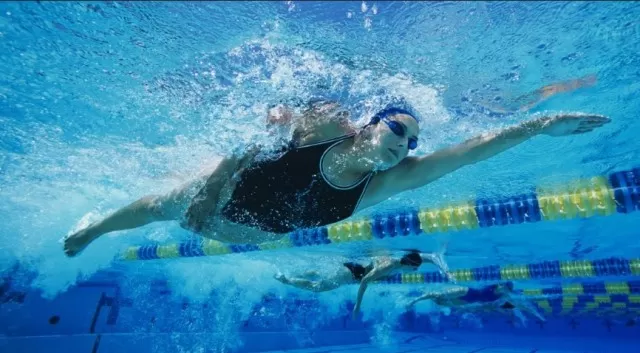Presidential Touch: Personalizing the White House. The White House, with its historic halls and revered façade, serves as a canvas upon which each president paints their unique imprint of home.
Beyond the grandeur of its architecture lies a realm of personalization, where the dwelling transforms into a haven, reflecting the tastes, passions, and quirks of its inhabitants. Journey through time as we uncover a collection of the most memorable, heartwarming, and occasionally eccentric renovations that past presidents have orchestrated to infuse the White House with the essence of family and home.As history unfolds, the White House remains more than a seat of power—it’s a testament to the diverse legacies and personalities that have shaped the nation. Through renovations and personal touches, each president has woven their unique narrative into the fabric of its walls, transforming a residence into a cherished family home that mirrors the heart of the nation itself.
Elevated Haven: The Tranquil Treetop Getaway Crafted by President Jimmy Carter

Beyond the demands of shaping a nation’s future, President Jimmy Carter found solace in the art of carpentry.
A crowning achievement of his craftsmanship emerged in the form of a magnificent treetop retreat, a manifestation of his love for his youngest child, Amy. Constructed in the year 1977, this enchanting treehouse stood as a testament to the value of an idyllic childhood experience.
Nestled within the embracing branches of a cedar tree on the serene expanse of the South Lawn, it offered Amy a sanctuary where the simple joys of youth could flourish.
With its soaring vantage of the world below, the five-foot-tall wooden wonder became a cherished haven for Amy, a place where her imagination could run wild while remaining within the protective gaze of her father as he conducted matters of the nation from the resolute Oval Office.
This secluded oasis, a fusion of paternal devotion and masterful craftsmanship, showcased Carter’s unwavering commitment to providing his child with the ordinary delights that every child deserves.
The legacy of the Treetop Retreat not only speaks of Jimmy Carter’s multifaceted persona, encompassing both the statesman and the nurturing parent, but it also underscores the importance of preserving the essence of childhood amidst the weighty responsibilities of leadership.
This arboreal masterpiece stands as a symbol of familial love, a tangible reminder that even amidst the most extraordinary circumstances, the bond between a father and his daughter can find its place among the leaves and branches, offering respite, inspiration, and cherished memories for generations to come.
Nourishing Legacy: The First Lady\’s Presidential Patch
Driven by her maternal concern for the well-being of her beloved daughters, Malia and Sasha, former First Lady Michelle Obama took a remarkable step to ensure their daily nourishment.
In a groundbreaking move in 2009, she orchestrated the cultivation of the largest edible garden in the annals of presidential history, right upon the verdant canvas of the South Lawn at the White House. This visionary undertaking was a testament to her dedication to fostering healthy eating habits and a sustainable lifestyle.
Amidst the expanse of the South Lawn, the sprawling L-shaped 1,100-square-foot garden burgeoned with life, boasting a rich tapestry of 55 diverse varieties of vegetables and fruits.
From the crisp freshness of arugula to the tantalizing heat of hot peppers, and the exotic allure of tomatillos, each plant contributed its own vibrant hue and distinct flavor to this remarkable tableau. This living mosaic represented more than just a garden; it was a symbol of intentionality, nurturing, and the pursuit of wholesome sustenance.
The garden became a living legacy, a source of nourishment not only for the Obama family but also for the esteemed guests who graced the halls of 1600 Pennsylvania Avenue.
Its bountiful harvests found their way into the kitchens and tables where presidential meals were shared with family, friends, and dignitaries alike. A testament to the power of gardens to foster community, this fertile oasis transcended its botanical boundaries, becoming a hub for conversations, connections, and a shared commitment to wellness.
Michelle Obama’s Presidential Patch embodied values that extended beyond its physical borders.
It symbolized the potential for change that sprouts from a single seed, the significance of mindful choices in shaping a healthier future, and the enduring impact of a mother’s care translated into the soil and sustenance that nourishes not only bodies, but the very spirit of a nation.
Diving into History: The White House\’s Aquatic Spaces

Beyond the bustling arena of the press within the West Wing briefing room, the White House harbors a unique facet of its history—two distinctive pools that have gracefully endured through the decades.
Delving into the depths of presidential legacy, these aquatic sanctuaries have witnessed the ebbs and flows of time, each carrying a narrative of its own.
In the midst of the 1930s, a visionary move by President Franklin Delano Roosevelt paved the way for an indoor swimming haven to grace the west terrace of the White House.
Constructed in 1933, this aquatic refuge held a profound purpose—offering solace to the president who battled the effects of polio. Within its watery embrace, FDR found not only physical relief but also a tranquil sanctuary where the buoyancy of water could mend both body and spirit.
Over the years, this Indoor Pool, now hidden beneath the hallowed floors of the press briefing room, became an unexpected vessel of presidential strength, resilience, and personal triumph.
Yet the aquatic story did not end there.
A new chapter was penned during the Nixon administration, as the indoor pool was covered, its once-rippling waters replaced by the hum of history being made above. And then, in the year 1975, a sunlit narrative emerged at the behest of President Gerald Ford, an ardent swimmer with a love for the embrace of water.
The sprawling grounds of the White House became the canvas for an outdoor pool, a testament to Ford’s devotion to the water’s allure. This pool, kissed by the sun and nestled amidst the grandeur of the mansion, bore witness to moments of leisure and reflection, offering a glimpse into the presidential pursuit of balance amidst the demands of leadership.
As the years have flowed by, these aquatic spaces have quietly mirrored the multifaceted essence of the presidency itself—offering solace, rejuvenation, and moments of respite to those who have shouldered the weight of the nation.
The pools of the White House, whether hidden beneath the press or glistening in the open air, remain a testament to the human side of leadership, where even presidents find solace in the gentle embrace of water, swimming along through history’s currents.
Elevating Knowledge: The Transformed Presidential Library
With a heart steeped in a passion for literature and a dedication to fostering literacy across the nation, the bibliophile First Lady, Laura Bush, left an indelible mark on the presidential library during her esteemed tenure.
Her legacy resonates through a captivating tale of transformation that unfolded within the walls of knowledge, infusing it with a newfound vibrancy.
In a defining moment, Laura Bush orchestrated a sweeping metamorphosis of the presidential library, breathing new life into its very essence.
The year 2005 bore witness to a monumental overhaul, as the library’s collection was meticulously curated and refreshed, reflecting her commitment to enriching the nation’s intellect through the pages of countless books. This act, a tribute to the boundless power of words, symbolized her belief in the transformative potential of reading to illuminate minds and shape futures.
But the transformation was not limited to the library’s contents; it extended to the very architecture that housed it.
In a brilliant stroke of ingenuity, 2006 saw the library adorned with a new coat of paint and the elegant replacement of drapes. Through this visual symphony, the ceiling itself seemed to rise higher, casting an illusion of grandeur that mirrored the lofty aspirations of those who sought knowledge within.
Laura Bush’s meticulous attention to detail was an ode to the human desire to reach for intellectual heights and expand the horizons of understanding.
The Uplifted Library, as it came to be known, was not just a physical space but a testament to a First Lady’s unwavering commitment to fostering a love of reading and education.
It stood as a beacon, a haven where words held the power to transport, transform, and transcend the boundaries of time and space. Laura Bush’s legacy continues to resonate, a reminder that even in the halls of power, the written word remains an eternal wellspring of inspiration, and that through knowledge, minds can soar to heights previously unimagined.
On the Path to Balance: President Clinton\’s Presidential Run

In the whirlwind of his presidential duties, Bill Clinton found solace in a simple yet invigorating activity—running.
As the pressures of leading the nation weighed heavily, he sought refuge on the pavements just beyond the White House confines, lacing up his running shoes to embark on a personal journey toward tranquility. However, this pursuit of peace wasn’t without its complications, and a clever solution was devised to harmonize his need for exercise with the demands of security.
President Clinton’s love for running, a glimpse into his quest for equilibrium amidst the tumultuous role of commander in chief, posed a unique challenge for the vigilant Secret Service.
The inherent risks of having the president exposed to potential threats during his outdoor escapades were a cause for concern. Yet, recognizing the significance of providing him with a release valve for the rigors of his position, a thoughtful response was crafted.
In the year 1993, an ingenious compromise was etched into the very fabric of the South Lawn’s driveway—an ingeniously designed quarter-mile loop.
This unobtrusive track, nestled within the expanse of the presidential residence, became the conduit for President Clinton’s pursuit of physical well-being and mental clarity. As each stride carried him forward, it also echoed a larger narrative of balance and adaptability in the face of challenge.
The track on which President Clinton treaded became more than just a pathway for exercise; it symbolized his commitment to maintaining a harmonious equilibrium between the responsibilities of leadership and his personal health.
It was a living testament to the delicate art of finding common ground—a space where his determination to stay physically fit intersected with the intricate choreography of safeguarding his security.
“Right on Track” encapsulates not only the evolution of a president’s exercise routine but also the interplay between dedication and pragmatism.
President Clinton’s journey along this circuitous route mirrored the twists and turns of his presidency, embodying the notion that even within the confines of the most complex challenges, solutions can be crafted that honor both the individual and the institution.
*The information is for reference only.